Torres del Paine National Park in Chile is one of the world’s beautiful places. The centerpiece of the park is a branch of the Andes mountain range known as the Cordillera del Paine. Located in the southern Patagonian region of the country, the park’s magnificent scenery includes lakes ranging from ultramarine blue to brilliant turquoise, raging waterfalls, deep green valleys, and vast glaciers that cascade down mountainsides.
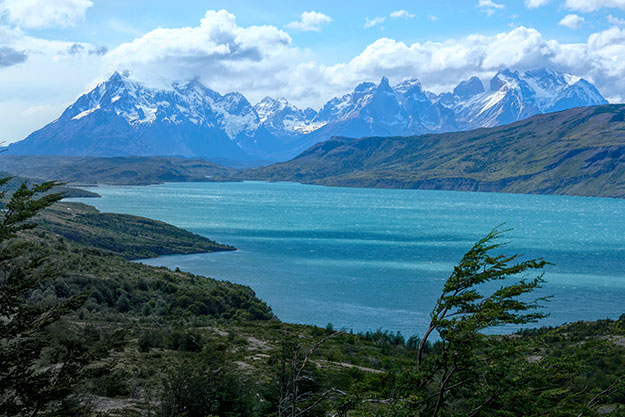
Most awe inspiring are mountains themselves. In geological terms, the Cordillera Massif emerged relatively recently. Thus, rather than being eroded and rounded like much of the Andes, these mountains are jagged and rugged. They began life as underwater sediments that were deposited in layers. Over eons, volcanic activity compressed these sediments into rock and thrust them up, tilting and folding them into bizarre shapes. The lava that welled up from deep within the earth cooled into a grey granitic platform for the multicolored sedimentary bands. The result is a kaleidoscope of colors that changes throughout the day, depending on the angle and direction of the sun.

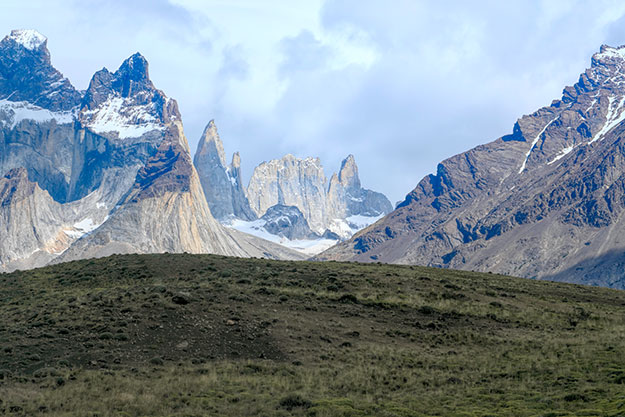
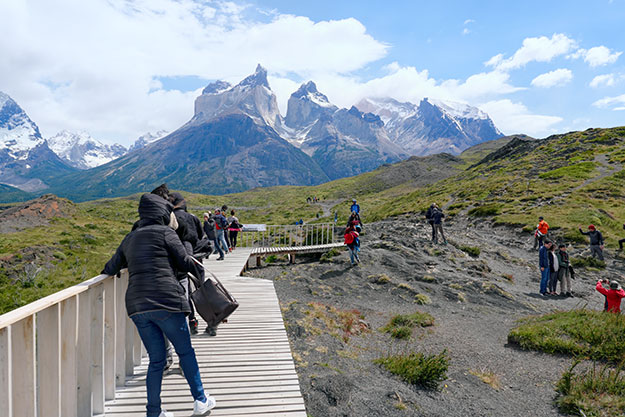
I’d long wanted to visit Torres del Paine, but I knew that doing so would present some challenges. Many insist the ideal way to see Torres del Paine is to hike the “W” route, which takes about three to five days, or the longer ”O” route, which takes between seven and nine days to complete. However, my days of long rugged treks are over. I could have opted to stay at one of a handful of accommodations located inside the park, but they are all exceptionally expensive. Instead, I decided to stay in Puerto Natales, the gateway to Torres del Paine, which offers much more affordable lodging options.
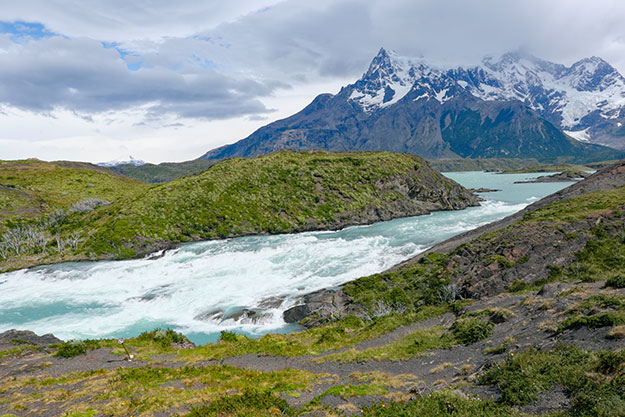

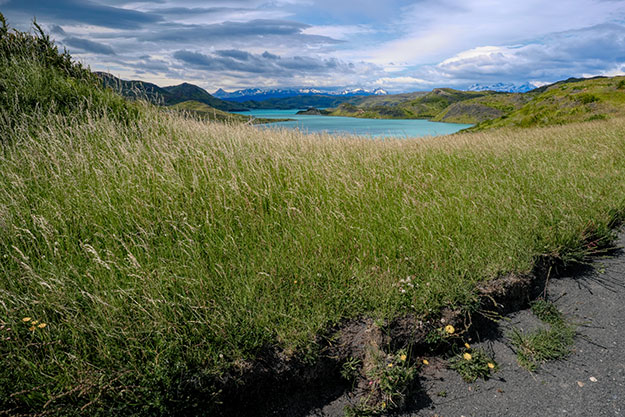
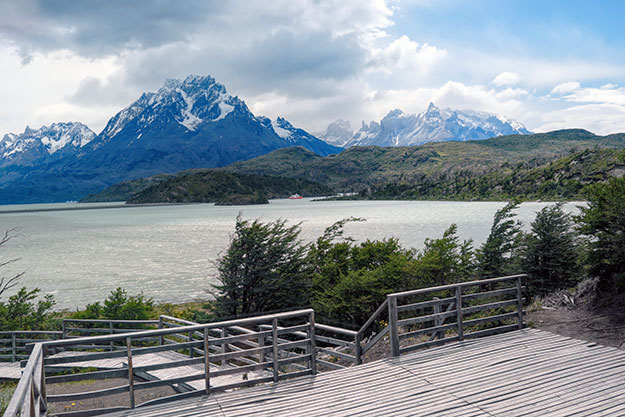
Since Puerto Natales is located more than two hours away from the park entrance, it presented yet another set of challenges. I could have taken the early morning public bus to the park but once there, I still would have been on foot. The park is vast; it encompasses more than 700 square miles. This didn’t seem like a good option, especially when I considered the implications of missing the last bus back to town in the late afternoon. I also considered renting a car and driving the well-marked circuit myself. But without a guide, I never would have spotted a Patagonian grey fox, learned about the indigenous Guanaco, watched Andean Condors soaring on mountain updrafts, or seen Porcelain Orchids at the Salto Grande Waterfall.
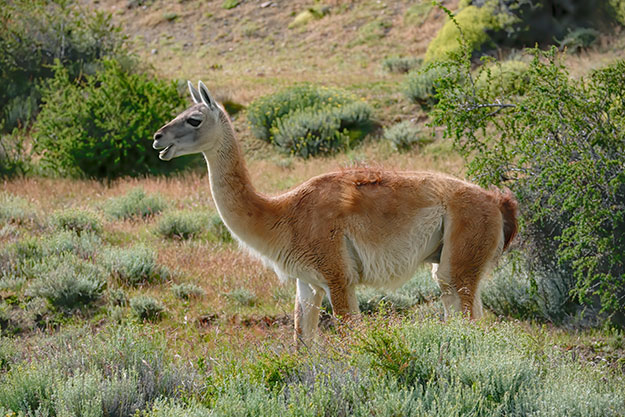

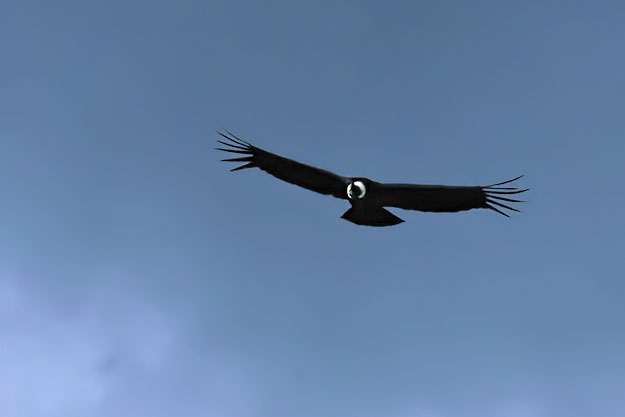
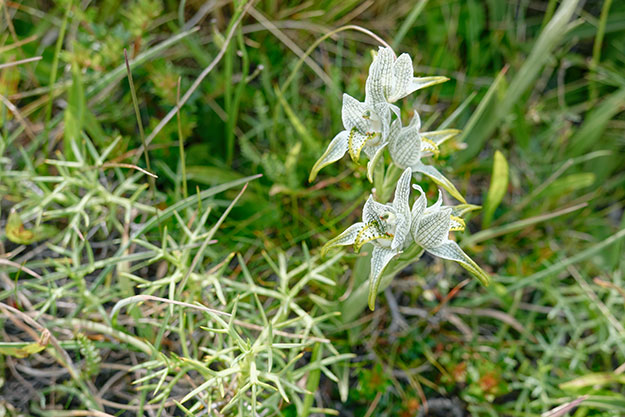
Fortunately, a number of companies in Puerto Natales provide an excellent way to tour Torres del Paine National Park in a day. Initially I worried that a day tour would consist of a series of quick stops where we were ushered off and on the bus with little time to absorb the beauty of the landscape. But to my surprise (and delight), it was not the cattle drive that I had feared. The tour was well organized and informative, and we were given sufficient time to enjoy each of the stops.
For first-time visitors who are wondering about the best way to tour Torres del Paine without hiking or breaking the bank, I highly recommend taking a day tour from a local operator. But if I ever return to Torres del Paine, I will rent a car. Not only will that allow me to explore deeper into the park, I a rental car will allow me to access off-the-beaten-track day hikes, camping, other glaciers not on the tour circuit, and even Chile’s famous fly fishing operations on its many rivers.

You are having some of the most beautiful images on this post.
Your photos are proof of how the wonderful sceneries of Torres Del National Park get more attractive day by day. It’s the world’s beautiful national park. Planning to visit here soon, thanks for the informative guide.
Seems like the scenery in Torres-del-Paine just keeps getting better and your great photos prove it! Thanks for the specific information about day-tour companies, etc., in your reply to a previous reader — that’s so helpful. Curious about what the temperatures (day and evening) were when you visited this spectacular place and was the trip difficult to pack the right clothes for. Thanks!
Hi Sylvia: I was there in late December, which is spring in South America. The temps were mild, in the low to mid 60’s Fahrenheit. Upon the recommendations of others I packed loads of stuff I could layer, because the temps can vary wildly throughout the day. That worked great, as I could peel off or pile on layers. The biggest problem is not the temperature, but the wind, which can be quite fierce.
Thank you for these beautiful pictures!
You’re welcome Libby. Glad you enjoyed them.
What a breathtaking location! I haven\’t been anywhere in South America yet, but your photos have inspired me. Thanks, Mel
Hi Melanie: I also hadn’t seen a lot of South America (previously only Peru and Ecuador), and this trip cemented my belief that SA is one of the least discovered and most interesting tourist destinations on the globe.
To clarify my previous question: I believe you went to the Easter Islands first and then to Chile. Did you do that independently or on a tour? If on a tour, can you recommend a company? Thank you!
Hi Margaret. I’d done an Antarctica cruise, so I was working my way up from southern Chile (Torres del Paine) to Santiago, from where I flew to Easter Island. I did both independently, which is my normal mode of travel. But at the destinations, I booked day tours with different companies, based on the recommendations of the owners of the guest houses where I stayed. In Puerto Natales (gateway to Torres del Paine), my day tour was with I booked with Onteaiken Tours. There are several agencies in town and I imagine any of them would be fine, as I suspect they’re all aggregators (Onteaiken was, as they had to call to confirm if seats were available). The cost was 40,000 Chilean Peso, or about $47 USD. It will likely increase, as the Peso is losing value against the dollar. Also, the price does not include entrance into the park, which was an additional $25 (they stop at the entrance for everyone to pay, and they only take cash). Nor did it include lunch, which was at Hotel Lago Grey (it cost me $22). Chile is NOT a cheap destination, but I think Torres del Paine is so beautiful it’s worth it. In Easter Island I booked a full-day tour and a second half-day tour, each focusing on different parts of the island. They were both with Mahinatour, and they did an excellent job. Whatever you choose to do, don’t miss the quarry where they carved out the Moai. There are still 397 Moai there in various stages of completion. The quarry is included on the full-day tour and your 10-day park entrance fee ($80) allows only one visit to the quarry.
Thank you so much for the helpful information!
You’re welcome Margaret 🙂
Can you recommend a good tour operator for visiting Torres del Paine?
We were there last week. Great trip! Four nights and three days at
Explora Resort. The best.
Hi David. I’d go there again, for sure. Three days wasn’t enough.
I just added this to my bucket list. I’ve been thinking about adding it, but your photos have sealed the deal. It’s now officially on the list.
Oh you’ll love it Suzanne. And my photos don’t even come close to doing it justice.